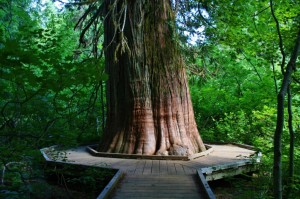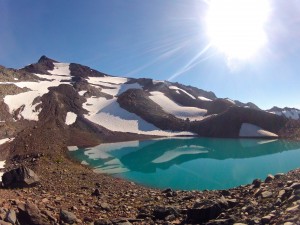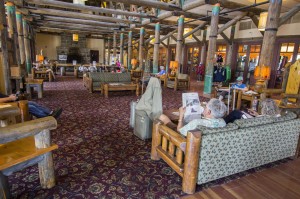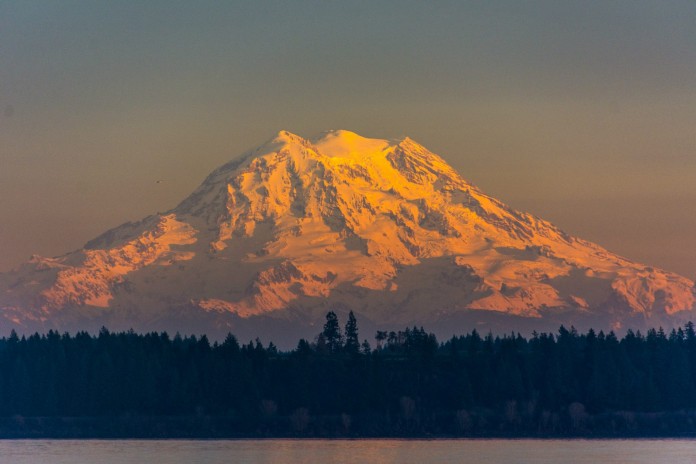By Douglas Scott
 Towering 14,409 feet above sea level, Mount Rainier is one of the most iconic mountains in the world, seen by millions each and every sunny day in the Pacific Northwest. Its image sits on our license plates, letting us see it every day, with clouds or not. We refer to it as our mountain, or the mountain, and for many, Mount Rainier National Park is the first National Park they have visited. In a year when we are encouraged to find a park, rediscovering Mount Rainier National Park is the perfect weekend activity.
Towering 14,409 feet above sea level, Mount Rainier is one of the most iconic mountains in the world, seen by millions each and every sunny day in the Pacific Northwest. Its image sits on our license plates, letting us see it every day, with clouds or not. We refer to it as our mountain, or the mountain, and for many, Mount Rainier National Park is the first National Park they have visited. In a year when we are encouraged to find a park, rediscovering Mount Rainier National Park is the perfect weekend activity.

Mount Rainier is an iconic National Park, predating the formation of the National Park Service by 17 years. Formed in 1899, Mount Rainier National Park is America’s 5th oldest park, and despite being located just 53 miles from Seattle, is the second most-visited of Washington State’s three national parks. While Olympic National Park may receive nearly twice the visitors of Mount Rainier, visitor numbers to the park have increased steadily, and 2015 looks to be a busy year. This year, thanks to an extremely low snowpack and warmer temperatures, Mount Rainier is projecting a 50% increase in visitor numbers, helped by a February that saw 74% more people than it did in 2014. With the shortest winter closure of roads occurring since the 1970s, and a projected opening of Sunrise set for June 3, Mount Rainier is waiting for you to explore it this spring.
Mount Rainier is getting popular, but the park still remains a mystery to many. Most of us have visited Paradise, Longmire, and Sunrise, but how much do we know about those locations, and how much do we know about the park? For instance, did you know Mount Rainier National Park is 97% wilderness? Or that the roads, Sunrise Day Lodge and the Longmire Buildings are part of a National Historic District?

“One of the lesser known elements is the number of historic structures in Mount Rainier,” explained Tracy Swartout, the Deputy Superintendent of Mount Rainier National Park.
“I encourage people to drive the roads and explore the buildings, and know that they were built with blood, sweat and tears,” adds Swartout.
Built over a century ago, the lodges, roads, and bridges are a style of historical architecture that help define the NPS. The drive from the west entrance to Paradise is a work of art and incredible itself, intertwining subtle curves through forests and next to rivers, handmade rocky bridges over waterfalls, and glimpses of the mountain before finally arriving in dramatic view of the glacier-capped volcano.
Swartout is one of the many park employees who not only love the park, but also knows a great deal about its history, culture and best locations. When asked for a few areas she would recommend to those who haven’t visited the park in awhile, she gave out a few fantastic ideas.
“One thing I would recommend is to try out Westside road for some mountain biking,” Deputy Superintendent Swartout told us. “Visitors should really consider the eastern side of the park, Second Burroughs is a very popular hike, but I like it.”

The east side of Mount Rainier National Park is visited less often that Longmire and Paradise, mainly due to both its proximity to Seattle and for being closed during the winter months. The most popular destination on the east side is Sunrise, a region that can get quite crowded during the wildflower bloom. Be aware that arriving at sunrise after the noon hour on a summer weekend could leave you without a place to park. Instead, go to Sunrise on a weekday, getting there early enough to catch a sunrise.
In the words of Deputy Superintendent Swartout, “Being at Sunrise for sunrise is spectacular.”
If early mornings aren’t your style, the Ohanapecosh region in the eastern part of Mount Rainier is a must see. With amazing trails, old growth forests, suspension bridges and access to the soon-to-be-reopened Stevens Canyon Road, the eastern side of the park is well-worth exploring and rediscovering.
While many trails around Mount Rainier can be found on websites like Washington Trails Association, there are a few favorite areas for unique spring trips to this incredible National Park.
(Re)Discover Mowich Lake and Hike Spray Park
Mowich Lake and Spray Park are two iconic places for those looking for remote camping and hiking adventures. Located on the western slope of the mountain, the region is home to incredible sunsets and access to one of the more beautiful hiking regions of Mount Rainier National Park. If you haven’t seen this area, a trip to Spray Park is highly recommended. Information about the Spray Park trail can be found on the Mount Rainier National Park website.

Bike the Carbon River and Camp in the Wilderness
There are very few bike-in only campsites in the National Park Service, but Mount Rainier is lucky enough to have the Carbon River. With the road having washed out a decade ago, access to the region is limited to hikers and bikers. Camping here gives you a glimpse of the mountain that few get a chance to see. Information on access and camping can be found on the Mount Rainier National Park website.
Participate in a Ranger Program or Guided Walk
If the other two options are too intensive, taking a guided hike with a ranger is an incredibly fun and memorable experience. Learning about the region from experts gives you background on the trail and culture of the region, as well as providing you with the chance to ask any question you have!
Information about Ranger programs, including the Junior Ranger Program can be found at Mount Rainier National Park’s website.





















































